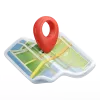20 min read How to Use Your Local SEO to Drive More Traffic

Optimizing your blog posts for local search engine optimization (SEO) can significantly increase your visibility in local search results and attract more traffic. Here's a step-by-step guide on how to use local SEO to drive more traffic and use stats and data throughout the process:
1. Keyword Research:
- Stats/ Data: Use tools like Google Keyword Planner to identify local keywords related to your business. Look for keywords that have a high search volume and relevance to your industry.
2. Content Optimization:
- Stats/ Data: Integrate local keywords naturally into your blog content, title, headings, and meta descriptions.
- Stats/ Data: According to a study by Moz, pages with a keyword in the URL tend to rank higher.
3. Localized Content:
- Stats/ Data: Include statistics and data specific to your local area in your blog posts. This adds relevance and authenticity.
- Stats/ Data: Research and use local trends and statistics to enhance your content.
4. Google My Business Optimization:
- Stats/ Data: Google My Business is crucial for local SEO. Businesses with complete and accurate GMB listings are more likely to be considered reputable.
- Stats/ Data: According to Google, businesses with photos receive 42% more requests for directions and 35% more click-throughs to their websites.
5. Local Backlinks:
- Stats/ Data: Quality backlinks from local businesses or organizations can improve your local SEO.
- Stats/ Data: According to a study by Moz, link signals are among the top-ranking factors in local SEO.
6. Local Citations:
- Stats/ Data: Consistent NAP (Name, Address, Phone Number) information across online directories is crucial for local SEO.
- Stats/ Data: BrightLocal’s Local Citations Trust Report found that accuracy is the most important factor for local citations.
7. Mobile Optimization:
- Stats/ Data: A study by Think with Google revealed that 61% of mobile searchers are more likely to contact a local business if they have a mobile-friendly site.
- Stats/ Data: Page speed is a critical factor. Google's PageSpeed Insights can provide insights and suggestions.
8. User Reviews and Ratings:
- Stats/ Data: According to a study by BrightLocal, 87% of consumers read online reviews for local businesses.
- Stats/ Data: Positive reviews can boost your local SEO. Encourage satisfied customers to leave reviews.
9. Local Schema Markup:
- Stats/ Data: Adding local business schema markup can provide search engines with more information about your business.
- Stats/ Data: According to Search Engine Land, schema markup can lead to higher click-through rates.
10. Monitoring and Analytics:
- Stats/ Data: Regularly monitor your local SEO performance using tools like Google Analytics and Google Search Console.
- Stats/ Data: Track changes in rankings, organic traffic, and user behavior to make informed decisions.
By incorporating these strategies and using relevant statistics and data, you can leverage your local SEO to drive more traffic to your blog posts and enhance your online presence within your community.






































































